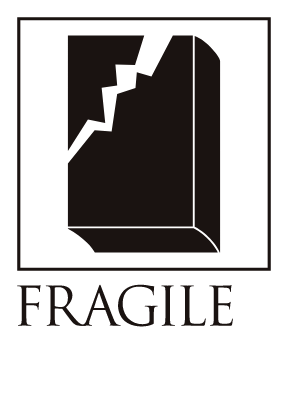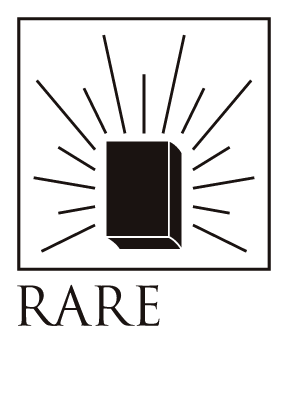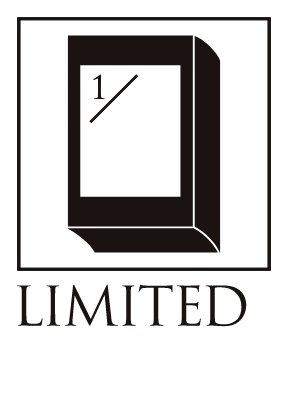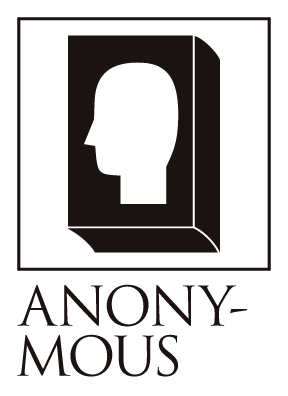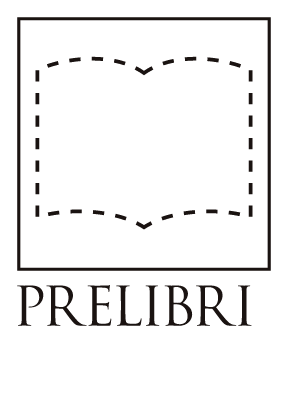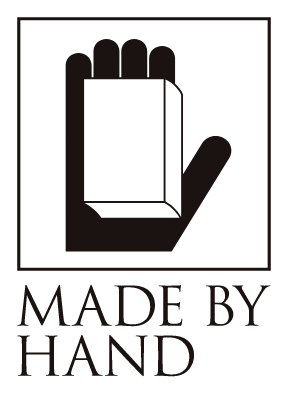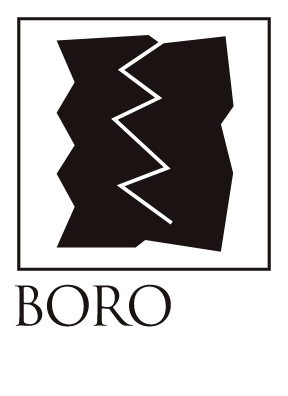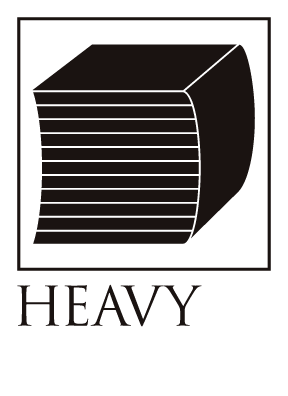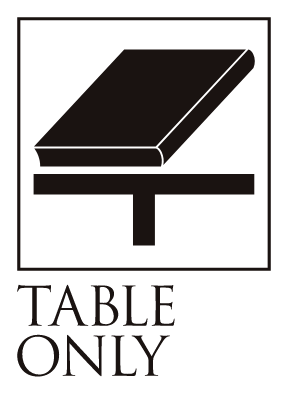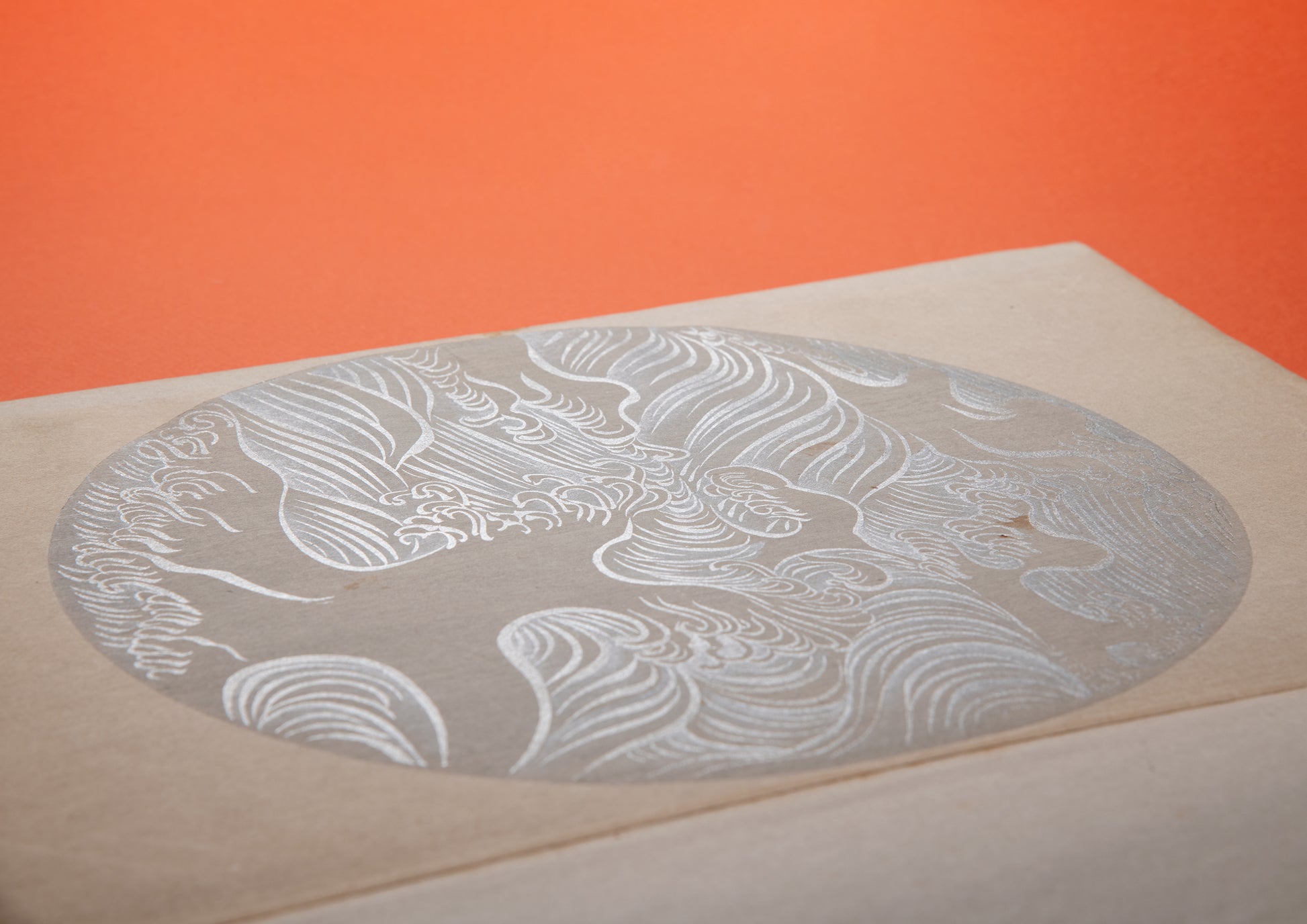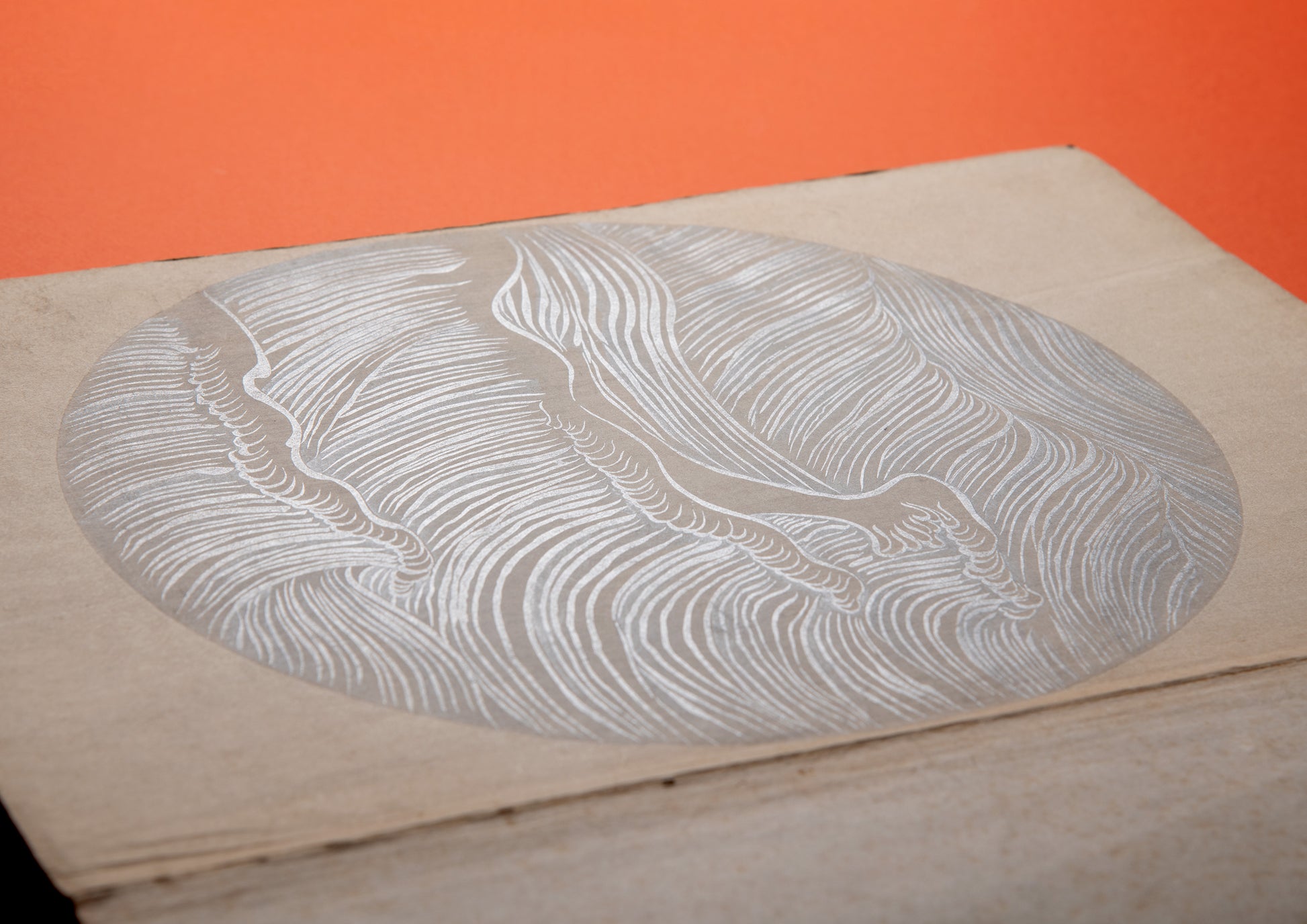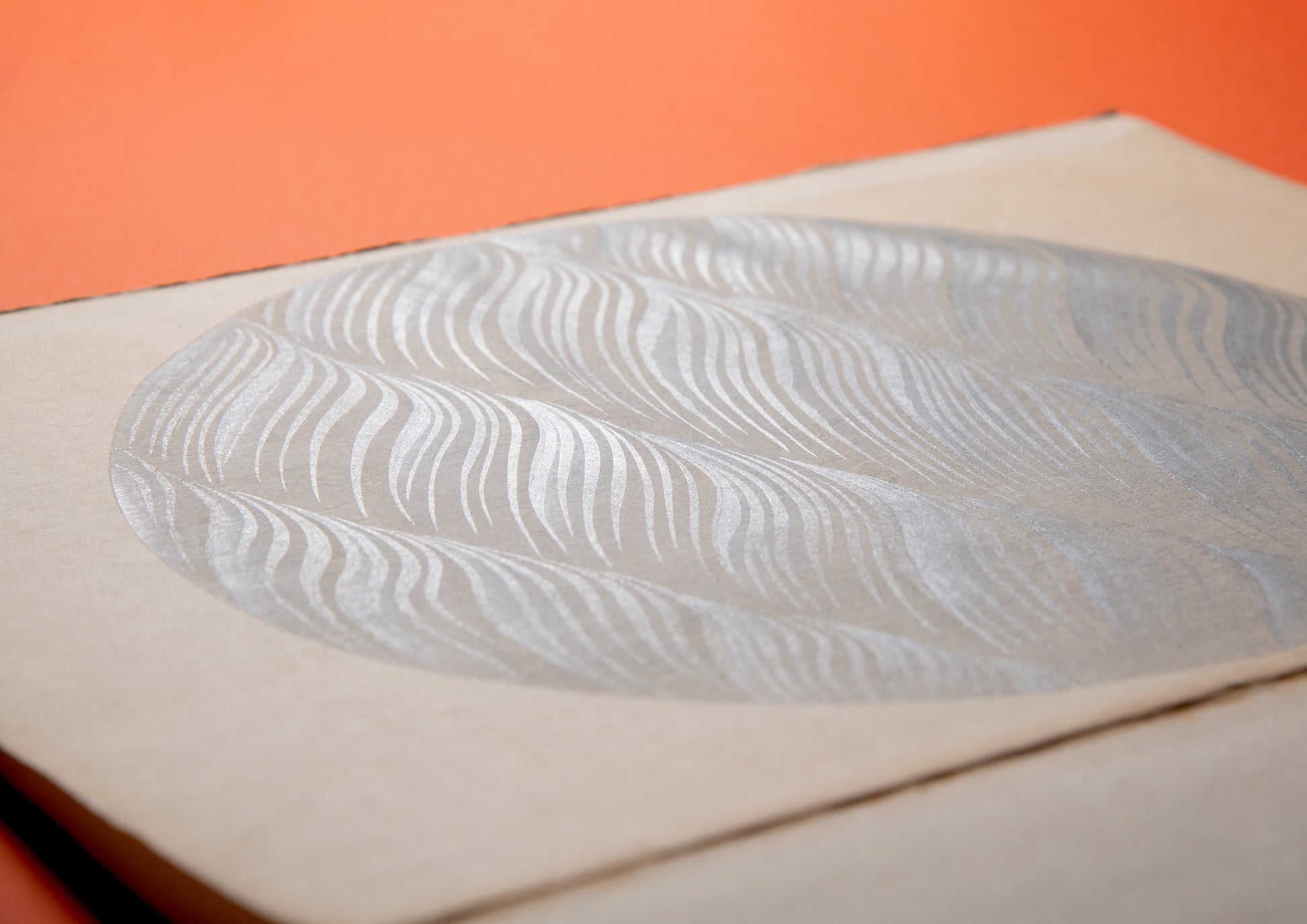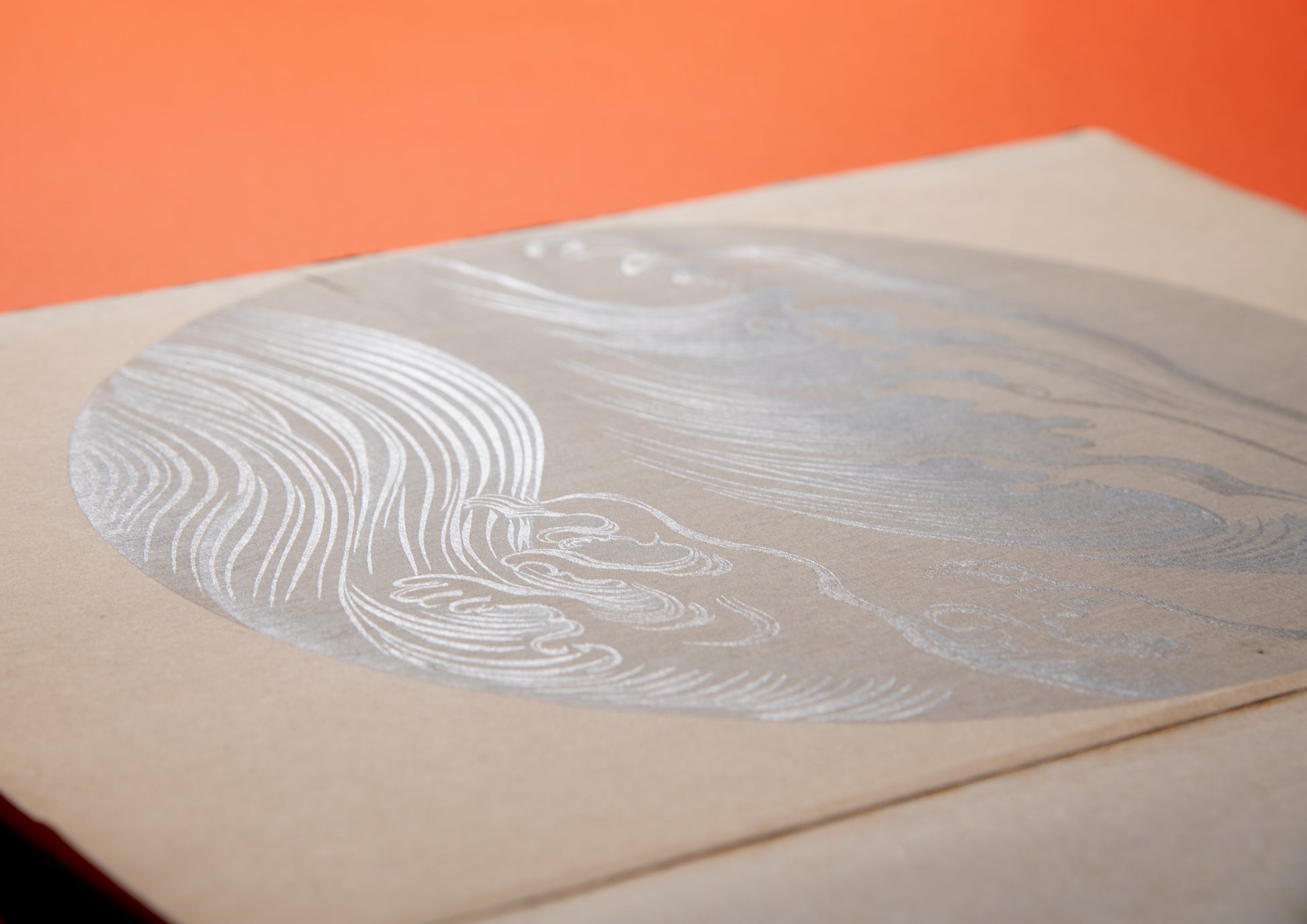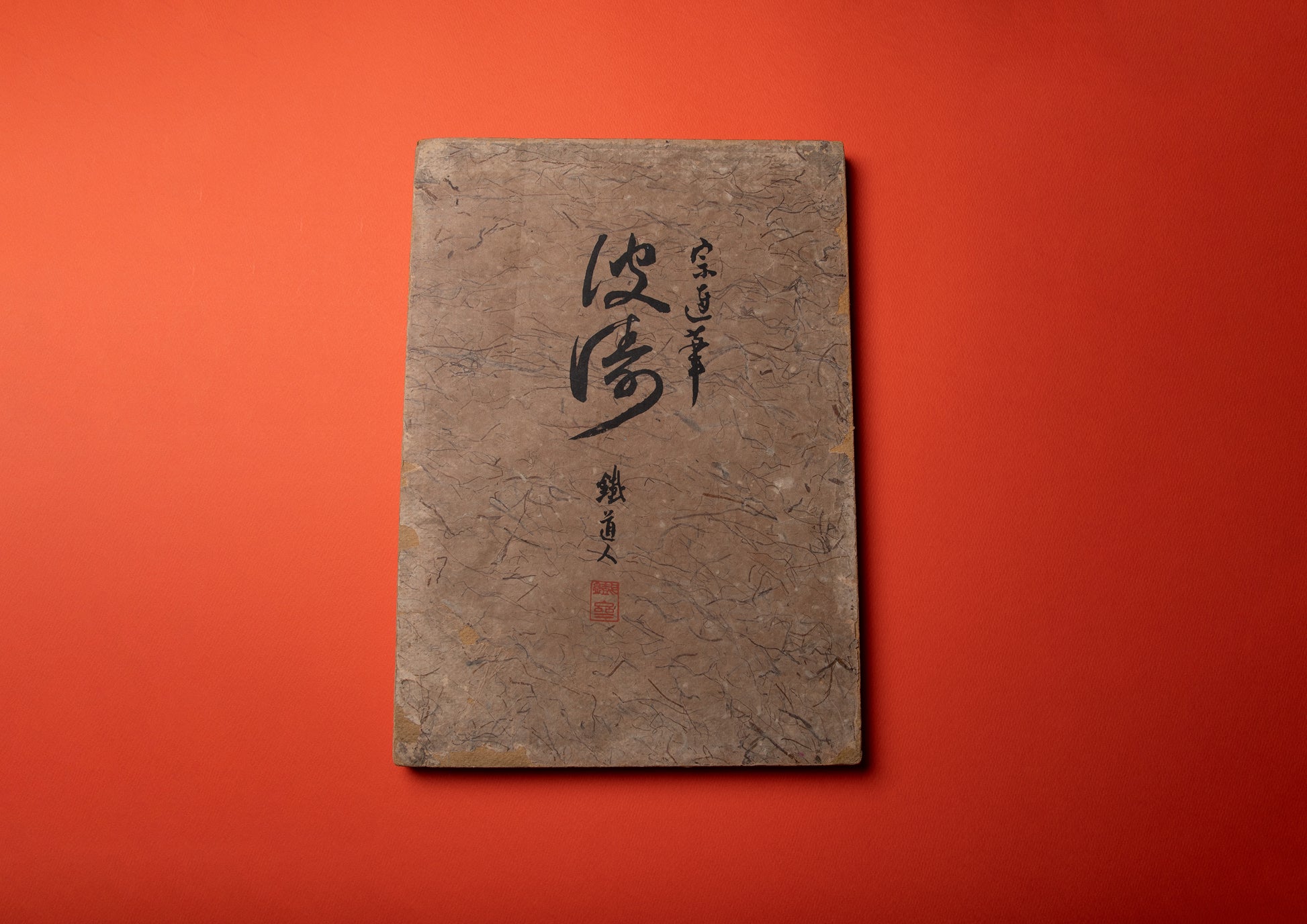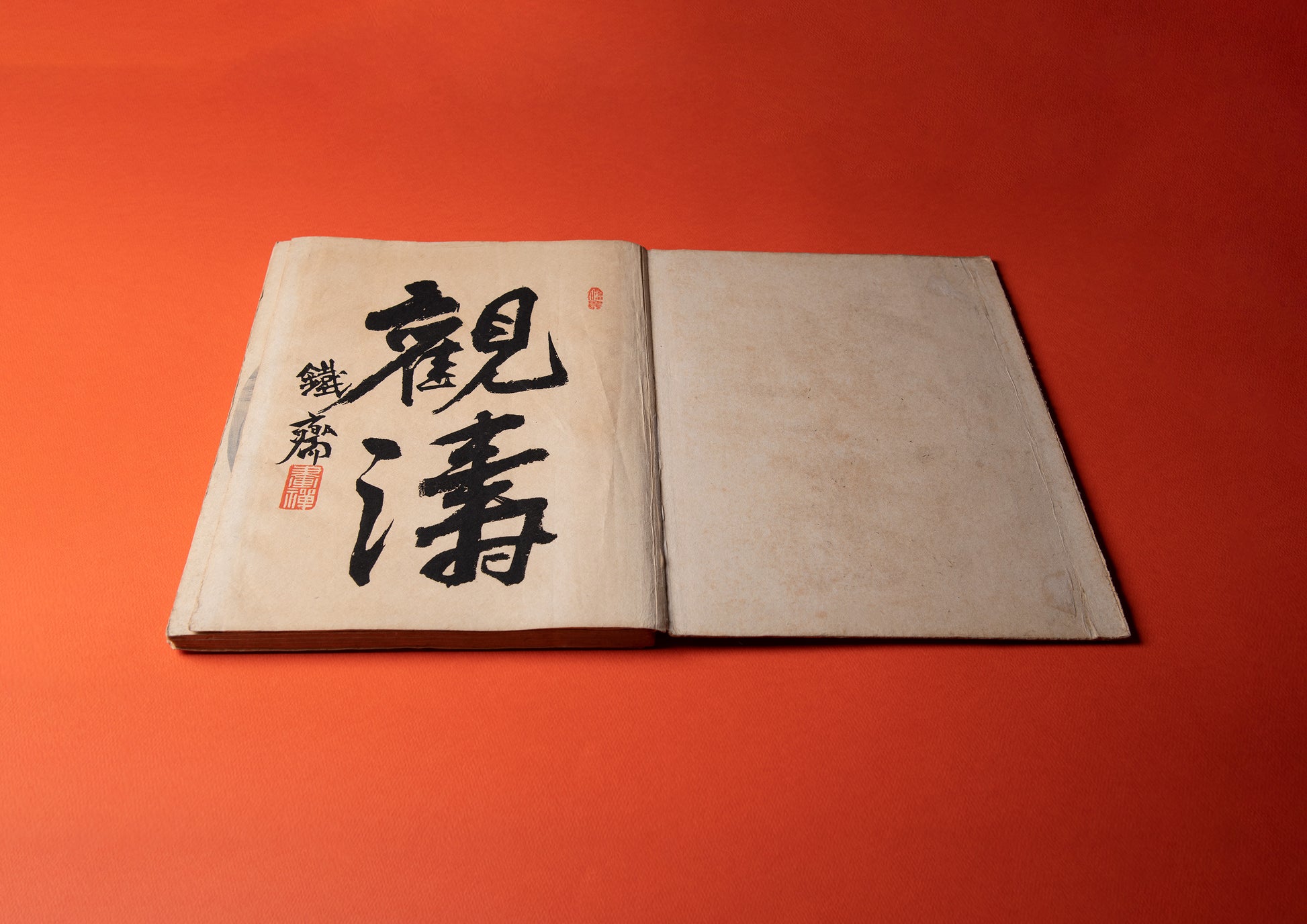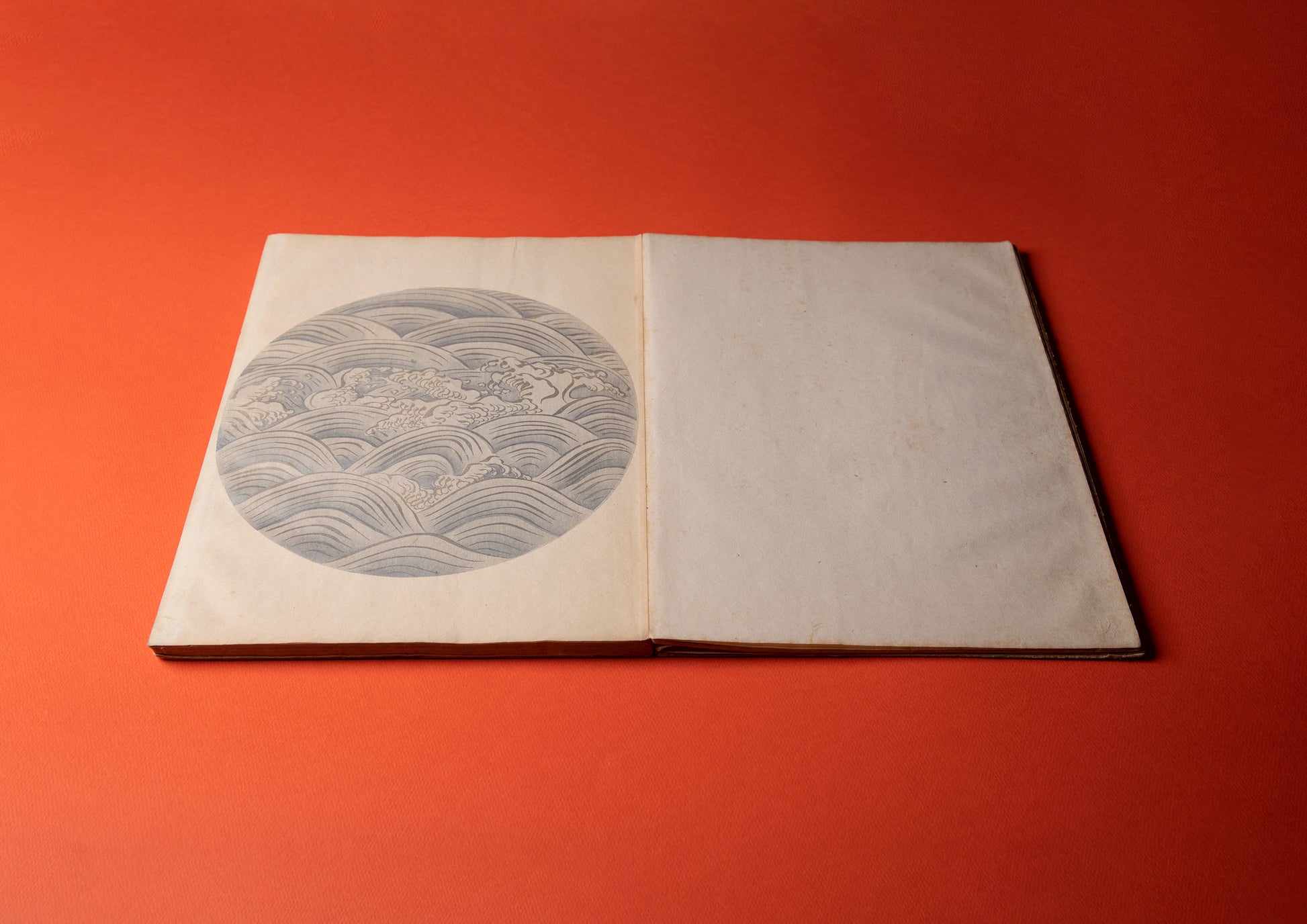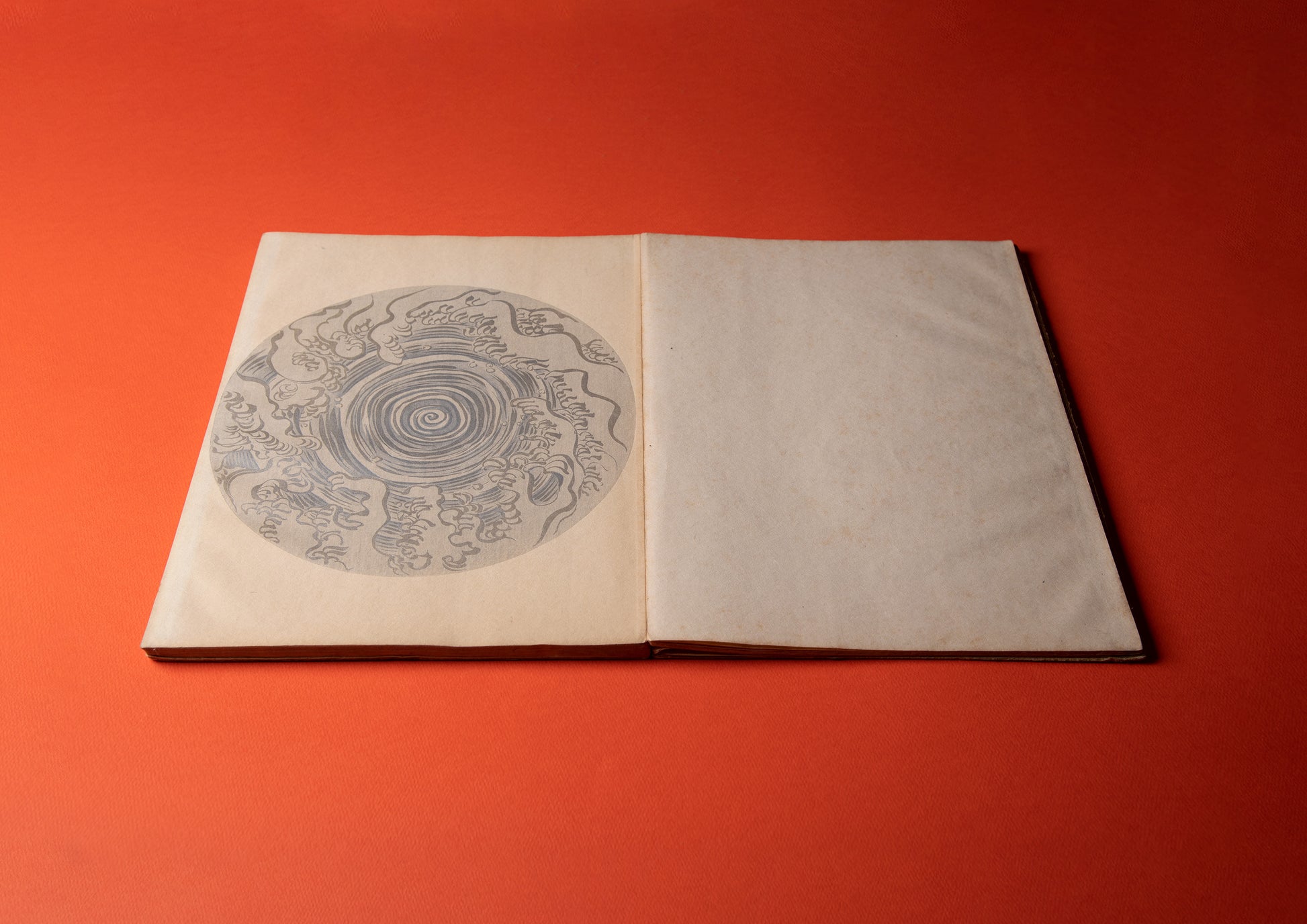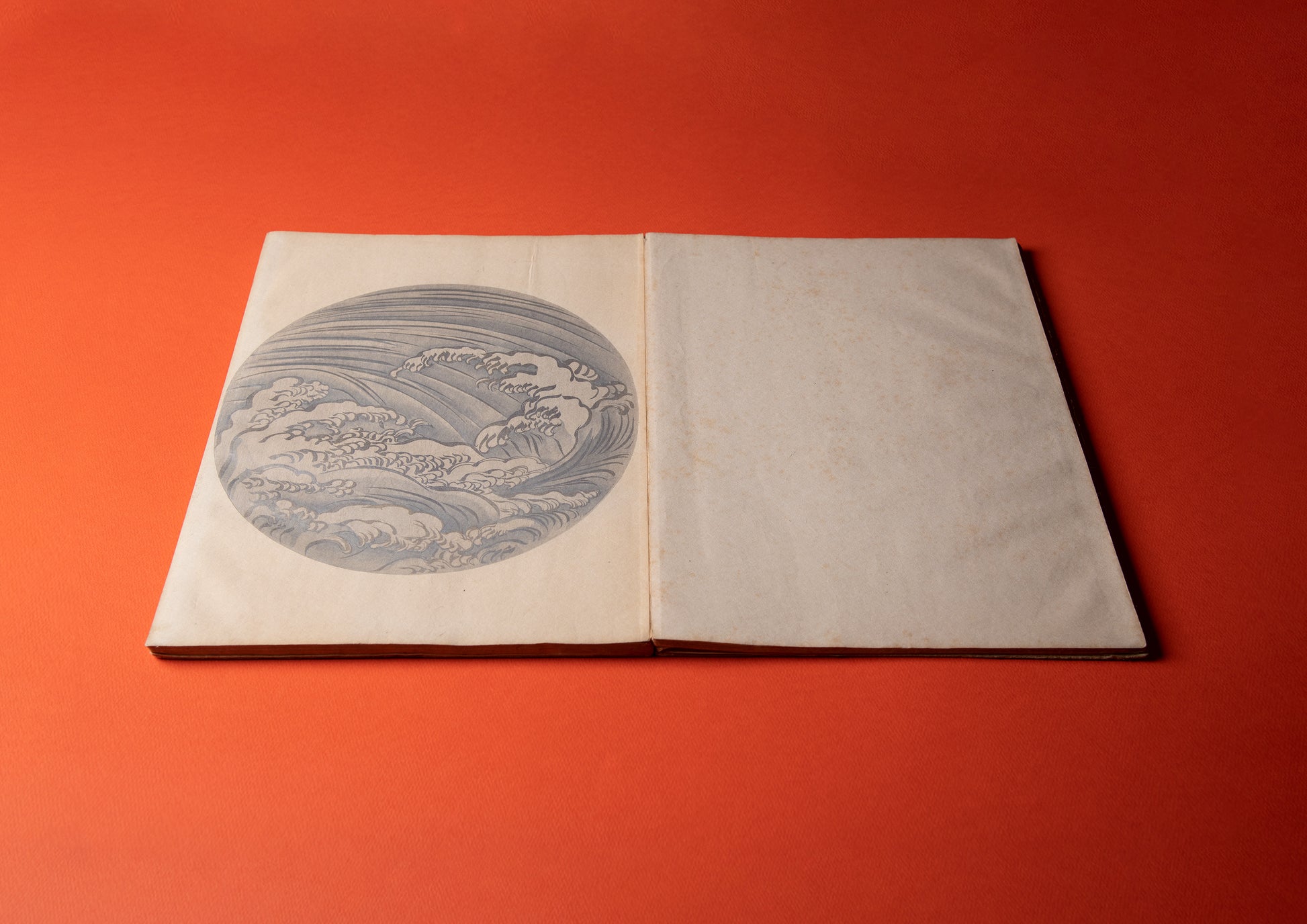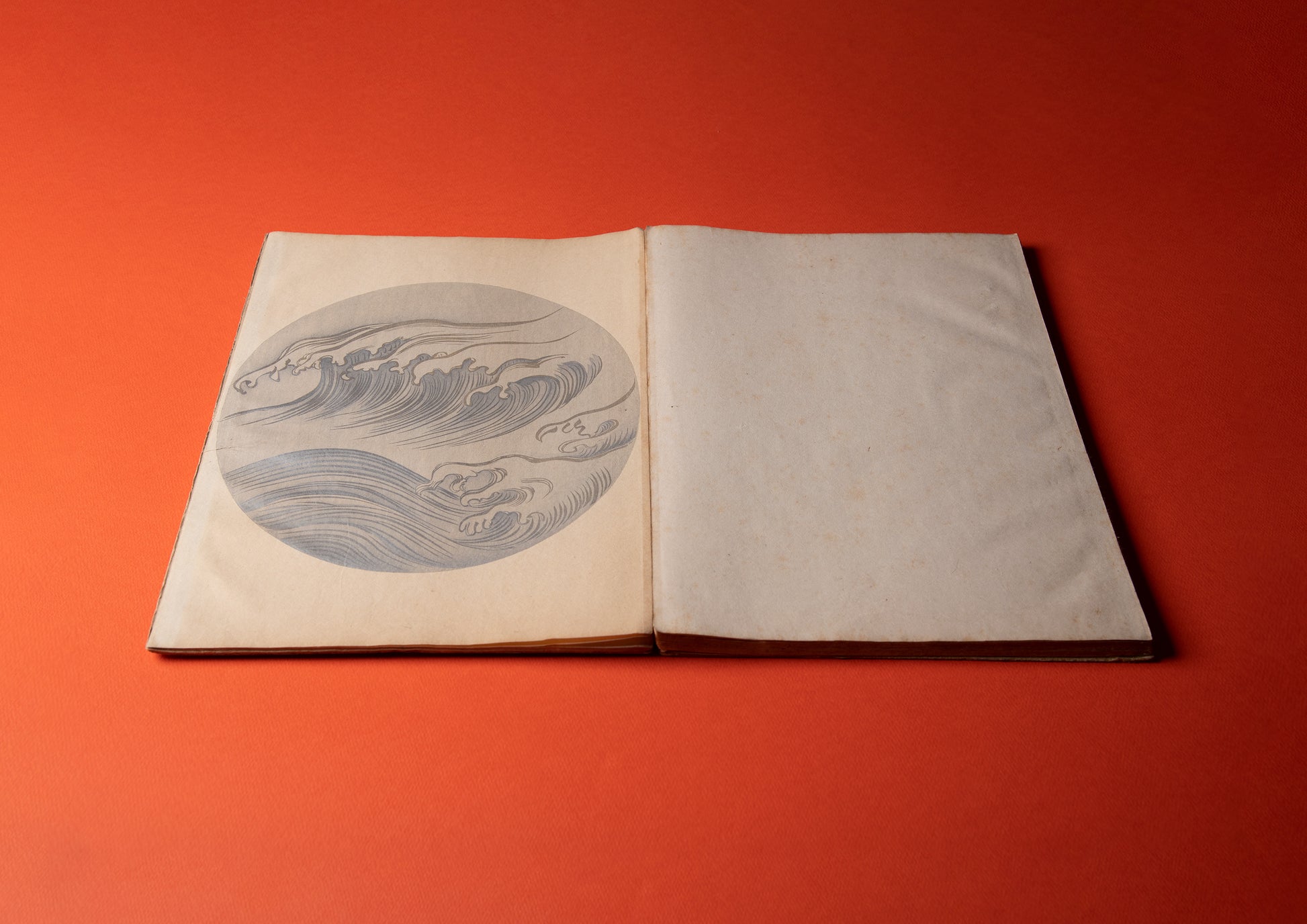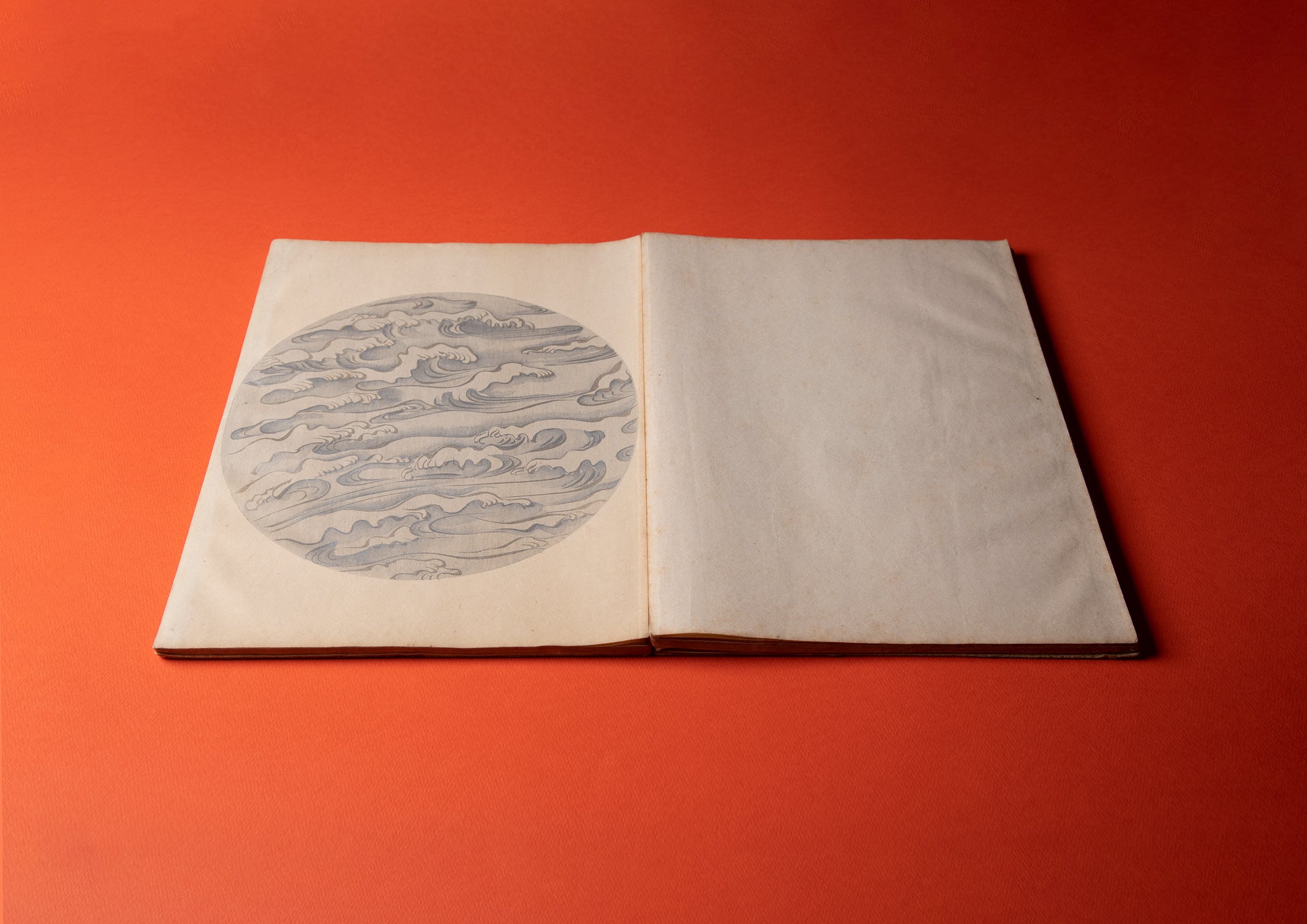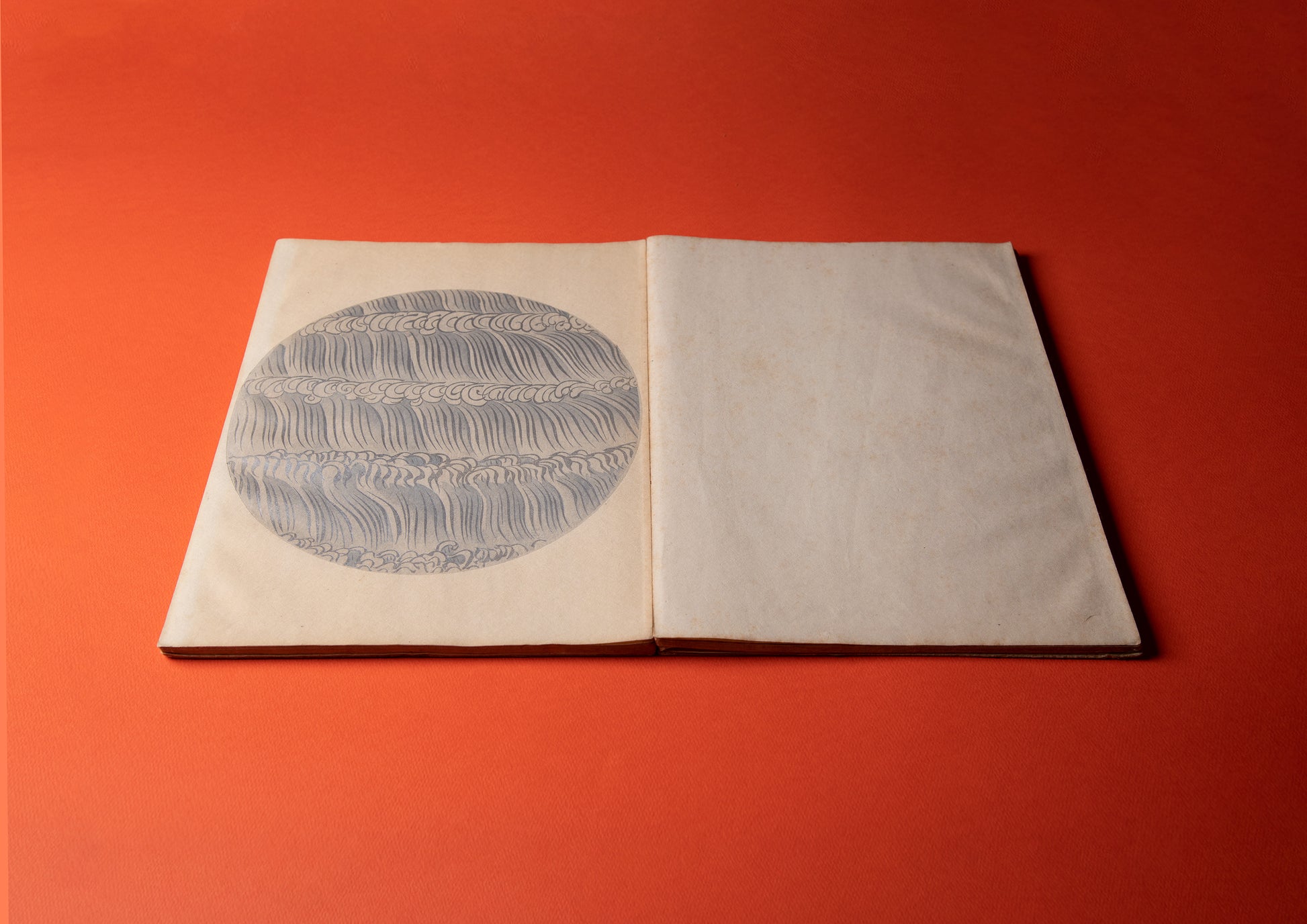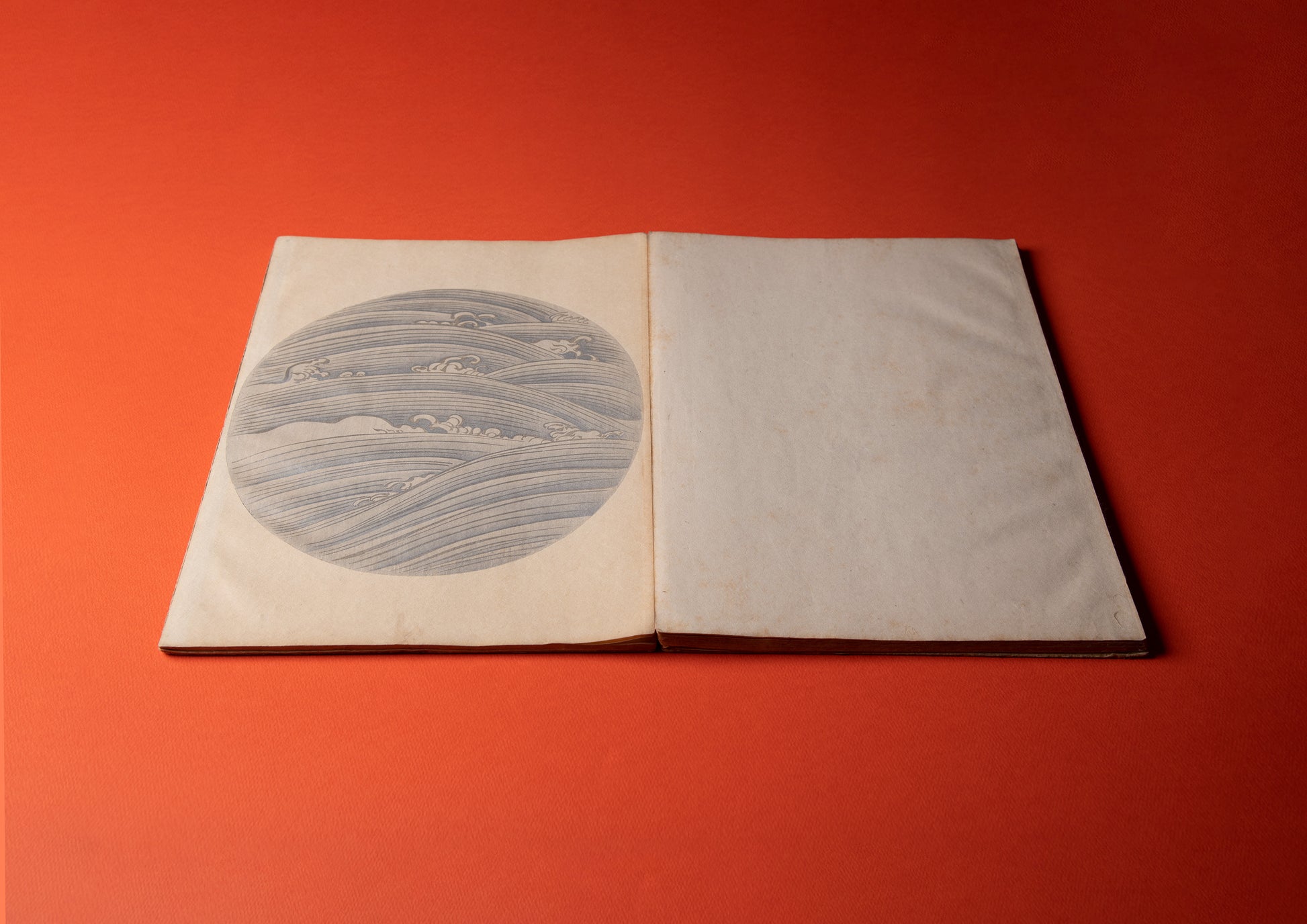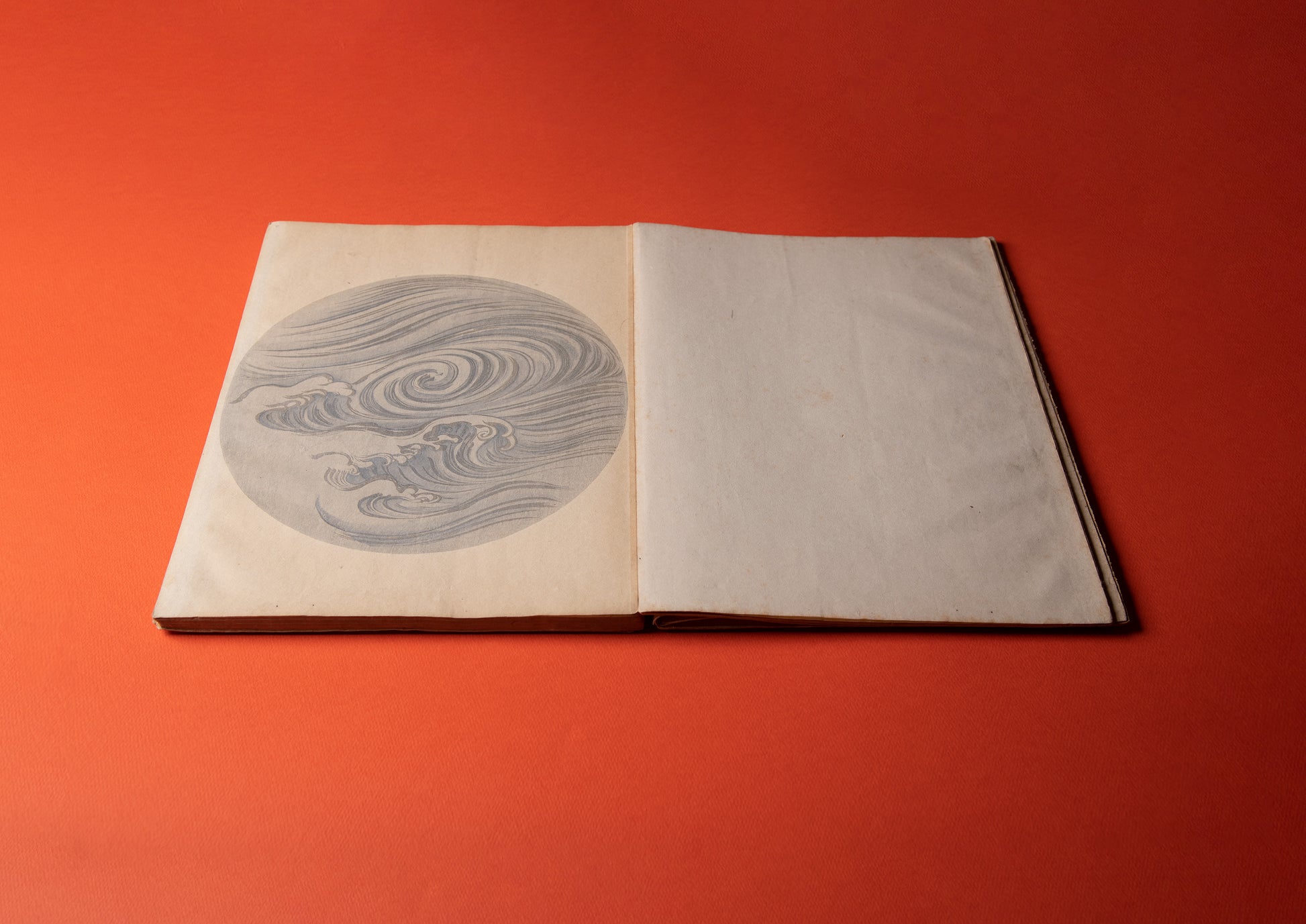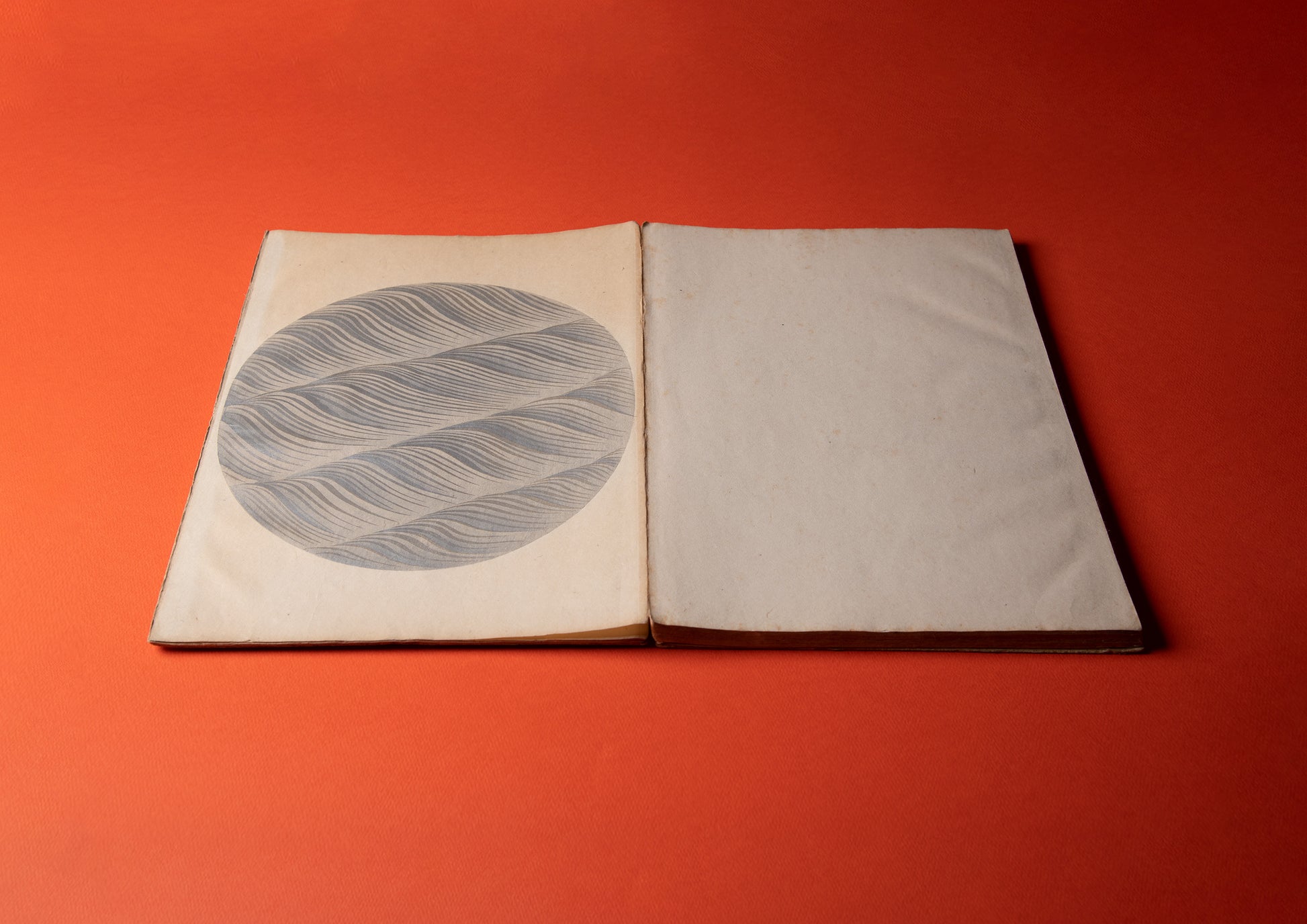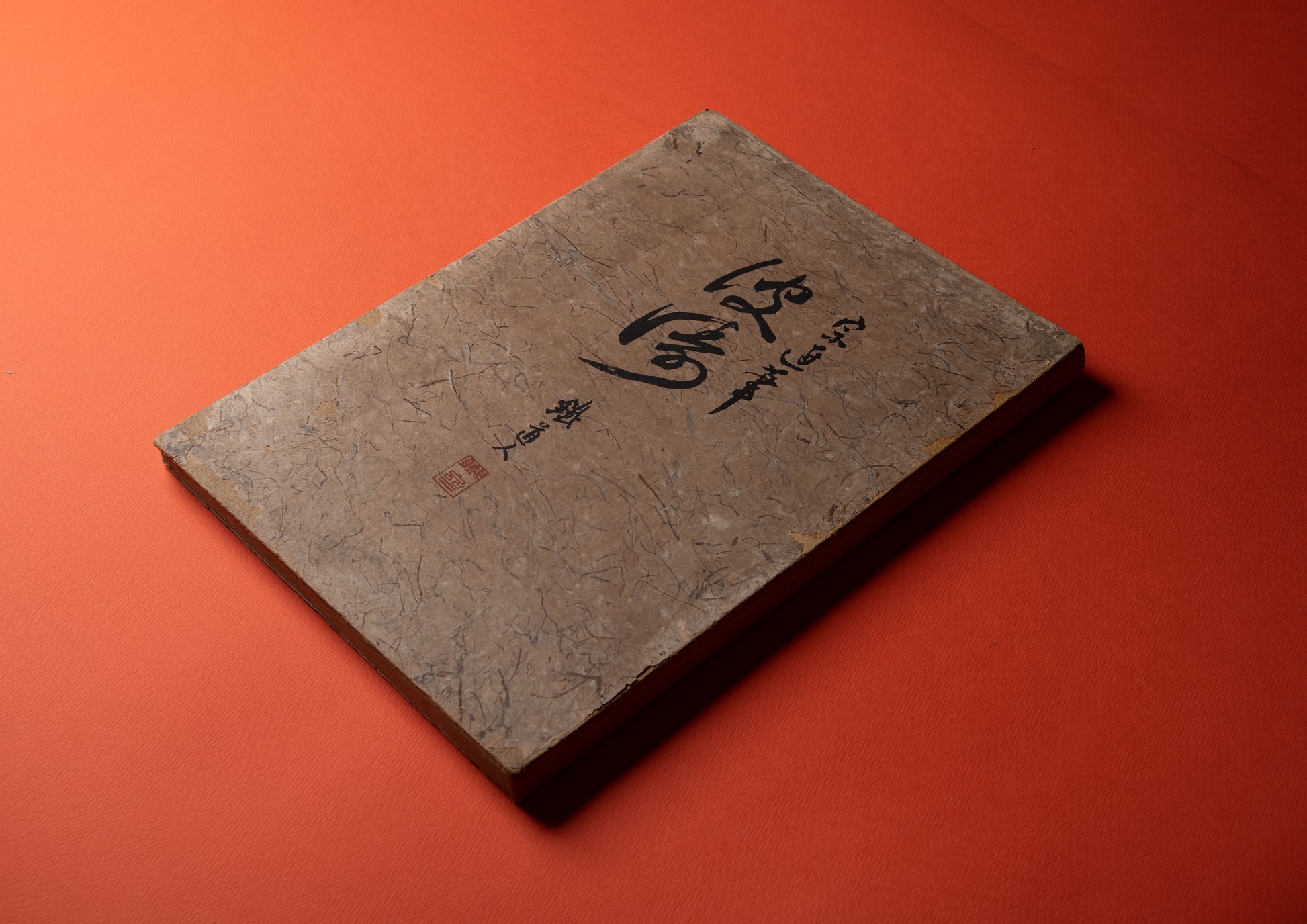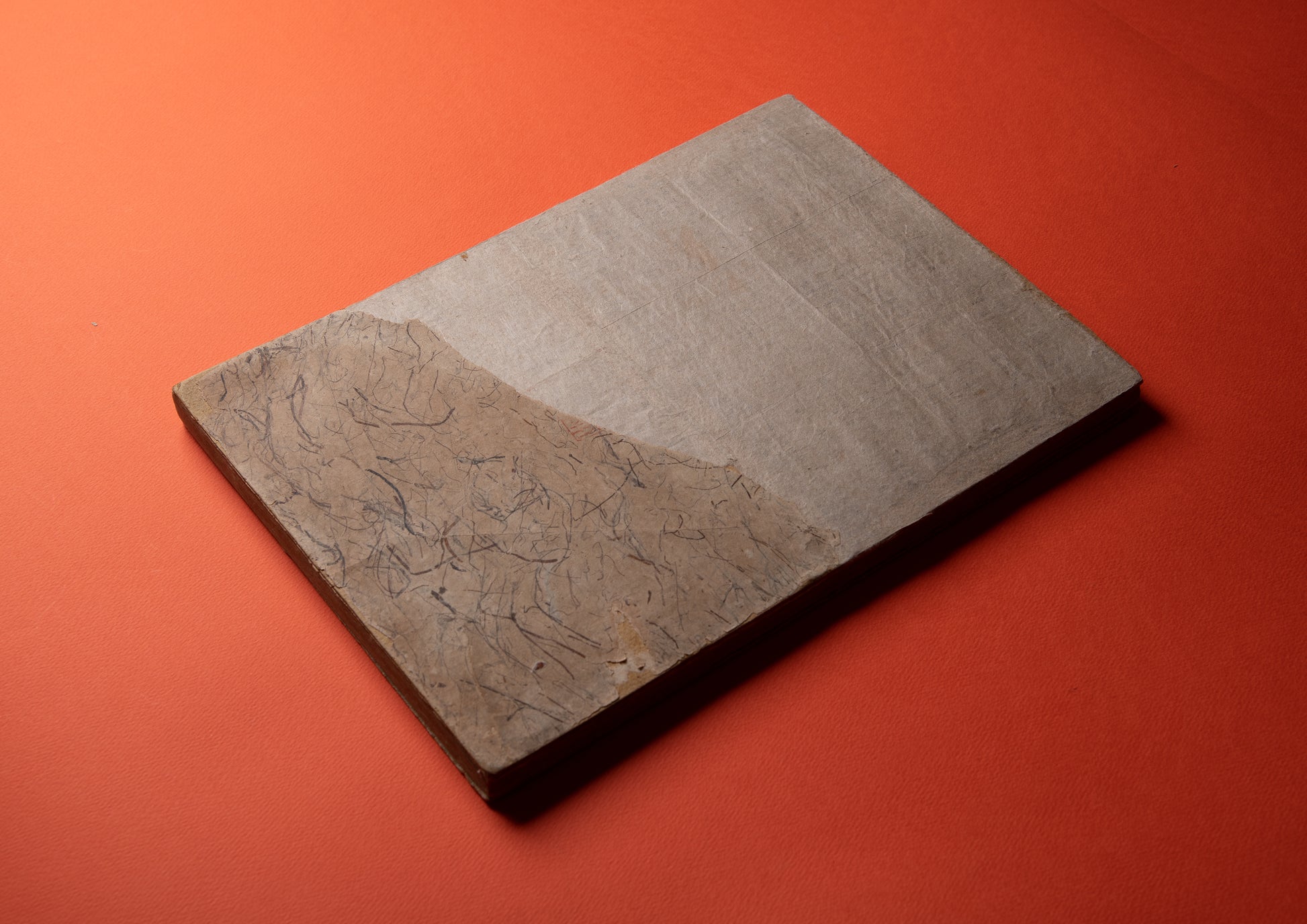Hatou/Tawaraya Sotatsu Tawaraya
Bibliographic Details
- Title
- Hatou / 波濤
- Artist
- Sōtatsu Tawaraya / 俵屋宗達
- Images
- Contains 22 images / 22図を収録
- Publisher
- Unsodo / 芸艸堂
- Year
- 1910 / 明治43年
- Size
- h385 × w27mm
- Weight
- 750g
- Language
- Japanese /日本語
- Binding
- Accordion Binding, Original Book Sleeve / 経本折、誂え筒袋付
- Printing
- Woodblock print / 木版
- Condition
- Good / 上製表紙上貼紙欠け有 (表紙四周少欠け・裏表紙3分の2欠け) 扉少焼け
題字および扉「観濤」:富岡鉄斎、原画:俵屋宗達(全22図)、印刷製本:芸艸堂(木版刷グレーのグラデーションと銀・片面刷) Title and frontispiece "Kantou" by Tomioka Tessai, 22 original drawings by Tawaraya Sotatsu, printed and bound by Unsodo (woodblock printing in gray gradient and silver, one side)
Only Sotatsu Tawaraya's "Waves"
Collected works from ArtSodo
A groundbreaking edition.
"Sotatsu's calligraphy “Hato Railwayman”——— The "Railroad Man" mentioned on the cover is,"The last writer"This is one of the pen names of Tomioka Tessai, who was also known as Tomioka Tessai. TessaiRegardless of how they were involved, this is one of the publications issued by Geisoudo that is rarely seen. The paperback with the handwritten inscription is thought to have been made to order for this work by the previous owner, and perhaps because it was protected by the paperback, the work is in good condition overall.
Simply put, "Hato" is a "picture book of waves" that uses the works of Sotatsu as a motif. There is no description of its origins as a book, but it focuses on and selects the parts of Sotatsu Tawaraya's works that depict waves, and then designs them.1It appears to have been compiled into a book. TessaiExcept for the title page and colophon page with the calligraphy "Kanto" by the author, the rest of the book shows wave designs one after another.twenty twoFigure. The design of waves as the form of water that changes in various ways, from gentle waves and small waves to large and rough waves, all with the same diameter.27cmThe design is housed in a circular shape. The only colors used are bluish gray shades and dull silver. The various waveforms, compiled under this very ascetic rule, combined with the page layout, which has been trimmed to the bare minimum, give the finished product a more modern impression than a classic one. The use of silver to outline the waves is particularly effective, and when placed in a dim light, it creates the illusion that the outlines of the waves are rising up with a dull glow.
The cover read "Railroad Man." I had expected that Tessai's work was probably in this area, that is, in directing the creation of a new and beautiful visual book using only Sotatsu's wave paintings, but according to Geisoudo's information, it seems that "Railway Man" and "Tessai" were limited to the calligraphy that accompanied the calligraphy or the praise given to the art book, and Tessai would not have been involved in the editing. Even so, everything from which parts of the forms of the waves drawn by Sotatsu were selected, to the limited use of color that created the effect of emphasizing the diversity of shapes, to the bold and impressive page layout, seems to be no ordinary piece of art direction. If this was the work of an editor who was closely involved with Geisoudo but is now unknown, it could also be said to demonstrate the strength of the Geisoudo publishing company. Incidentally, the author's name in the colophon is "the late "Tawaraya Sotatsu." His attitude is always one of modesty.
Images speak much more eloquently than words, but as you can see, "Hato" is very modern. It is no exaggeration to say that it is closer to contemporary art than to the world of Meiji design. The sphere placed in the center of the page is like It looks like a water planet floating in mid-air, and I can only take my hat off to the insight of the art director, whose name remains unknown.
Incidentally, publications released by Geisoudo during the Meiji period often feature an editorial by Tomioka Tessai. This is no surprise, as it was none other than Tessai who named the book "Geisodo" after the name of a fragrant herb that has long been used to protect books from pests. A video has been uploaded in which a curator from the Freer Gallery of Art goes a step further to examine "Waves" and Tomioka Tessai. The video includes The exhibit features Tawaraya Sotatsu's "Matsushima Screen," currently in the collection, and visitors can get a close-up look at the late artist's depiction of the waves.
Text by Masago Sato
<Related Links>
Watching the waves, listening to the waves:Symphony of Sotatsu and Tessai
The Japan Foundation"Sōtatsu: Waves of Creation" Exhibition
